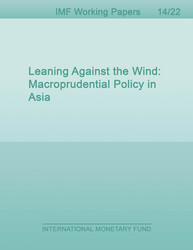
Leaning Against the Wind: Macroprudential Policy in Asia
In recent years, macroprudential policy has become an increasingly active policy area. Many countries have adopted it as a tool to safeguard financial stability, in particular to deal with the credit and asset price cycles driven by global capital flows. This paper reviews the use of key macroprudential instruments and capital flow measures in 13 Asian economies and 33 economies in other regions since 2000, and constructs various macroprudential policy indices, aggregating sub-indices on key instruments. Asian economies appear to have made greater use of macroprudential tools, especially housing-related measures, than their counterparts in other regions. The effects of macroprudential policy are then assessed through an event study, cross-country macro panel regressions and bank-level micro panel regressions. The analysis suggests that macroprudential policy and capital flow measures have helped curb housing price growth, equity flows, credit growth, and bank leverage. The instruments that have been particularly effective in this regard include loan-to-value ratio caps, housing tax measures, and foreign currency-related measures.
Publication date: February 2014
ISBN: 9781475572476
$18.00
Add to Cart by clicking price of the language and format you'd like to purchase
Available Languages and Formats
| English |
Prices in red indicate formats that are not yet available but are forthcoming.
Topics covered in this book
This title contains information about the following subjects.
Click on a subject if you would like to see other titles with the same subjects.
Economics- Macroeconomics , Economics / General , International - Economics , macroprudential policy , capital flow measures , credit growth , housing price
Summary
Copyright © 2010 - 2025
Powered by:
AIDC



